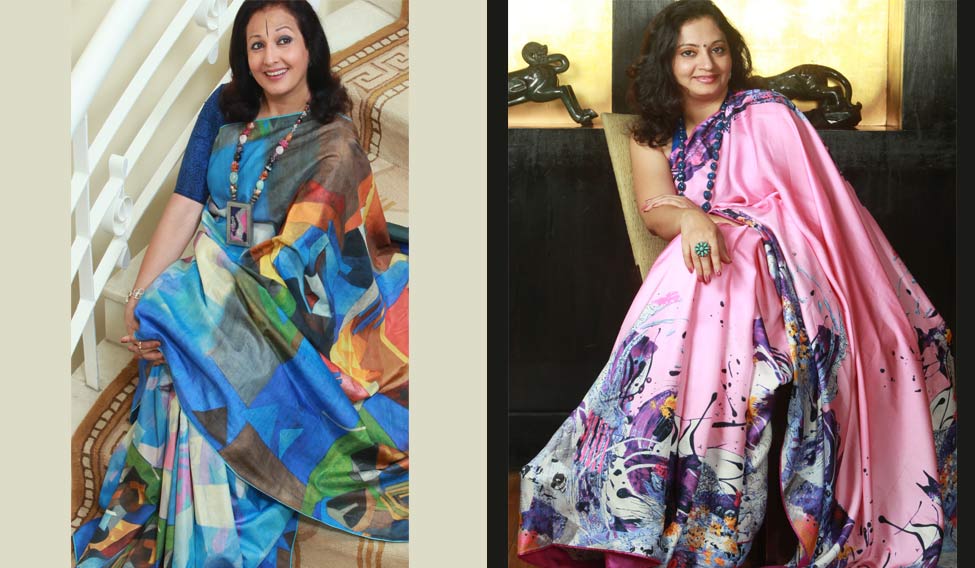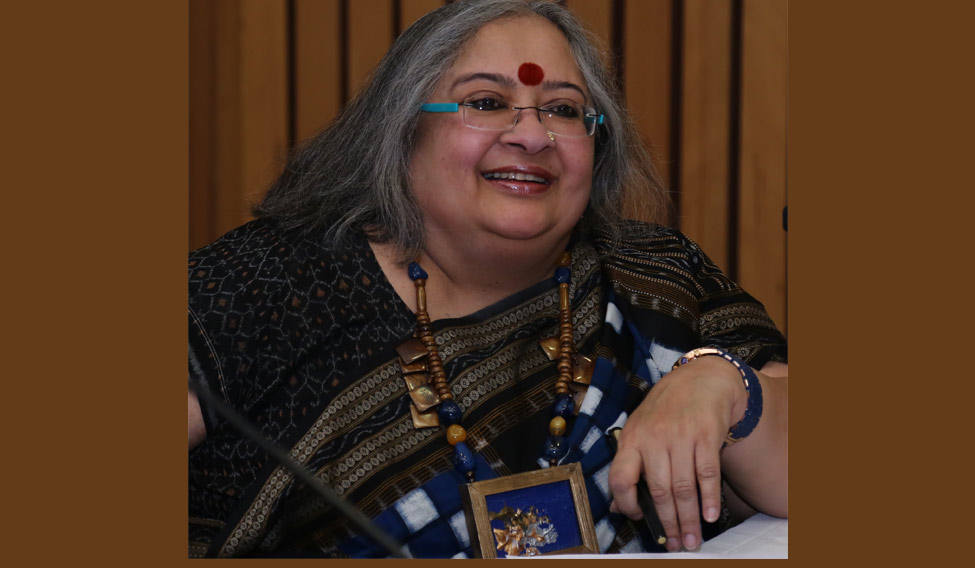Nearly four years ago, artist and designer Alka Raghuvanshi was in a dilemma about what to wear that evening. Her current collection of saris failed to tempt her so she decided to create her own by using one of them as a canvas. The results were so stunning that she launched a wearable art project titled Ehsaas.
In the project she joined hands with four eminent artists—Niren Sen Gupta, Shridhar Iyer, Sanjay Bhattacharya and Manish Gawad—to transpose artworks on saris, stoles, neck-ties, jewellery and handbags. “A painting has meaning in your life, beyond the wall. It must permeate into other aspects of your life,”Alka told The Week. This is exactly what the endeavour achieves by offering products of everyday use with works of art. Like, 50 paintings were used to create 20 handwoven saris (10 pieces each). “These are moving installations,” Alka says.
And the whole process was so amazing that director Rajesh Tailang made a film on it, which recently premiered in the national capital. “Ehsaas is an ephemeral experience, but we wanted to capture the many moments of Ehsaas so that we could savour them yet again,” says Tailang.
On the occasion, Alka took art lovers down the memory lane by bringing together 31 cultural icons like Pandit Birju Maharaj, Shovana Narayan and Prathibha Prahlad, among others. These distinct personalities bestowed a extended dimension to the canvas of five contemporary painters by walking the ramp dressed in their creations.

“The idea was to explore the whole heritage that is art with other disciplines like dance, music and cinema. For they are linked to each other,” explains Alka.
Talking about the relevance of this venture in modern times, Alka says, “Thanks to the internet and information boom, the youth knows the relevance of art. Also, travelling abroad has helped them understand the value attached to art internationally. All this has helped escalate the aspirational value of art back home. But strapped for time and money, they can neither spend hours creating art at home (like rangoli or wall art) nor can afford buying art worth lakhs,” she points out.
Besides, lack of space in an urban set-up dissuades them to own art works, which demands lot of upkeep. “This is where wearable art comes into the picture, which allows them to remain surrounded by beauty all the time without investing too much time and money on it.”
The price of wearable art collection starts from Rs. 7,000 onwards. “And they these artworks are multi purpose. For instance, if you like you can use a stole or as a wall art. It is practical and user-friendly just like in old days. Remember, how the our chakki (flour grinding machine) and spice boxes at home had carvings. They were pieces of art that we used everyday. I want the youth to enjoy a similar kind of art even today,” concludes Alka.







